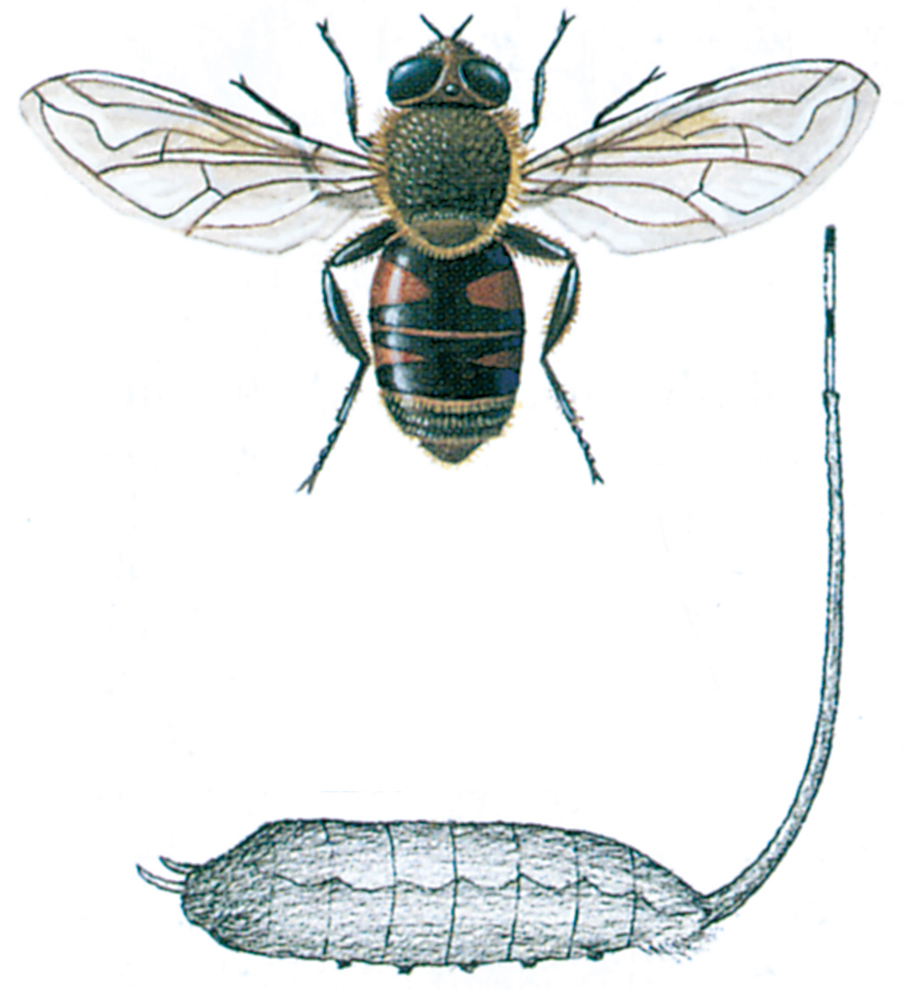(Latin: Eristalis tenax)

This is the larva of a hoverfly (Family Syrphidae), and it is not very well known, perhaps because it lives in drainage channels, in pools receiving water from dunghills and similar places with water that is grossly polluted with organic matter.
At its rear end this larva has a breathing tube which can be extended like a telescope to a length of up to 15 cm. With this organ it is able to reach the surface of oxygen-deficient water and breathe air.
When fully grown and ready to pupate, the larva, often known as a rat tail larva, creeps out on to the land and seeks a suit- able dry place in which to pupate. In so doing it may enter porches or cellars. The pupae are 10-12 mm long, grey-brown, almost oval, but they retain the long ‘tail’ and look somewhat like tiny grey mice.
From the pupa emerges a hoverfly, but unlike those •already mentioned, this species is remarkably like a honey bee (see p. 31).
Some hoverfly larvae can live in carrion and these have given rise to the very old story that bees can come forth from the rotting carcase of an ox. The myth appears to have been old in the time of the ancient Egyptians where both the bull and the bee were sacred animals, and in somewhat altered form it found its way to the Bible where Samson, after having killed a lion, finds both bees and honey in the mouth of the rotting carcase. There are also numerous references to this phenomenon in Greek and Roman literature. The myth continued right up to modern times and the final explanation, namely that it referred to hoverflies, not bees, did not come until the 1880s.
The rat tail larvae that find their way into the house are quite harmless, and the best thing is just to take them out again. If they continue to appear and start to become a nuisance, it would be a good idea to find out where they have come from and then drain the source, so that the adult hoverflies can find no stagnant polluted water in the immediate vicinity of the house in which to lay their eggs.




